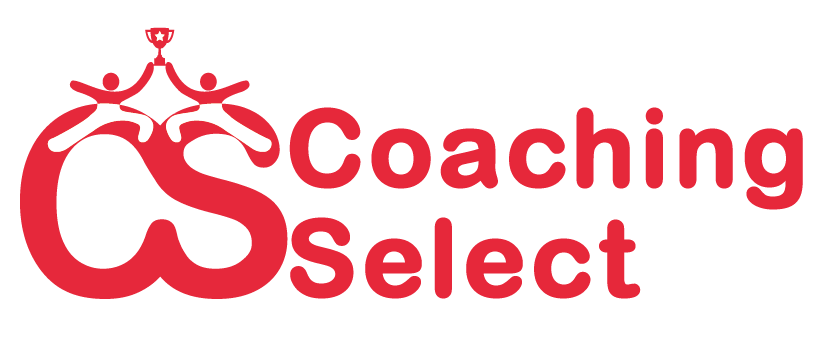Top 5 Digital Tools to Streamline Online Coaching
Discover the top 5 digital tools to streamline online coaching and enhance your teaching experience. Explore platforms for scheduling, communication, content delivery, and more to simplify your coaching process.
December 13, 2024

Online coaching has become a norm in the post-Covid era. For two years, the entire world was running mostly on remote technologies. Many people were introduced to a new, more convenient, and productive way of life. As a result, online working has stayed relevant even after the pandemic.
Teaching and studying remotely is very easy now. Thanks to the Internet, we can now talk to people across the globe in real time. We can share audio, video, and pictures with them. We can access resources that give us the information that we need.
However, the internet is vast, which means that tools and technologies used for doing all of the above are extremely varied. This can cause some confusion about which tools to use or not use.
Today, we have curated five amazing tools that can help both students and teachers interact and teach/learn seamlessly over the internet.
Top 5 Digital Tools to Improve Online Coaching
Here are the five tools that any online teacher can use for coaching their students.
1. Discord.com
One of the core requirements of online coaching is the ability to talk to each other in real time. At the very least, the coach should be capable of transmitting their voice to the students. Even better is if they can share videos as well.
During 2020, when Covid was at its peak, and remote working and teaching were mandatory, many tools were developed to facilitate online communication. One of them was Zoom, but that’s not the tool we are going to talk about. Instead, we are going to talk about a tool that has been around for way longer: Discord.
Discord is a free communications platform available on Android, iOS, browsers, and Windows. All of its prominent features are available for free. The ones most useful for online coaching are given below.
- Allows anyone to create a “server,” which is an invite-only closed group. Teachers can create servers for their classrooms and add specific students to them.
- Text and voice chat is available.
- Chat moderation rules can be set in servers.
- Servers can have “channels” to segregate discussions about subjects.
- Anyone in a server can video call all other participants in the server.
- During a video call, people can share their screen with other participants to show them what’s on it.
- People can send images, videos, and files through text messages.
All of these things enable teachers and students to seamlessly communicate and share study materials. As a result, you get streamlined online coaching. The best thing, though? All of these features are available for free.
2. imagetotextconverter.net
Online coaching and teaching are much easier now, thanks to some nifty tools. One of them is OCR (optical character recognition). OCR tools are commonly known as image-to-text converters. These tools allow you to extract any kind of text inside an image.
The obvious benefit is that you can take pictures of any text and then convert it to digital form. So, students can use it for:
- Converting physical notes into digital ones
- Sharing digital notes with others
- Creating notes from excerpts of books and lecture slides
- Enables editing and updating of notes
OCR applications are easily accessible on the internet. A lot of them are also at no cost. One example of a tool you can try is imagetotextconverter.net. This tool is free to use, does not need you to sign up, and provides advanced options such as batch processing.
In online coaching, an image-to-text converter serves another useful purpose. Teachers can assign homework to their students.
Naturally, since everything is online, the student has to provide the assignment in a digital format.
Now, many students are more used to writing by hand instead of typing. So, a student can create their assignment and then convert it to digital form for easier sharing.
The same goes for teachers too. When creating lectures, they might have an easier time explaining a concept when they can write it by hand and create free-hand drawings to accompany them. All they have to do to share those lectures online is to digitize them with an image-to-text converter.
3. Canva.com by Whiteboard
Canva Digital whiteboards are collaborative tools where different people can come together and work on things. Online teaching used to be more difficult than standard teaching because there were too few ways to interact with students directly.
Teachers could only one-sidedly provide information and had very few options to gauge the student’s understanding. Digital whiteboards have fixed that issue.
Now, there are many options to choose from when selecting a whiteboard, but for one-on-one tuition sessions, a free one is best. That’s why we recommend the Canva whiteboard.
Canva is free to use, but you have to create an account first. People can share the whiteboard link with others so that they can access the board as well.
Teachers can use this whiteboard to get students to display their understanding of the subject matter. It is akin to calling a student to the front of the class and making them solve a problem on the whiteboard.
Similarly, students can use the Canva whiteboard to pose problems to their teacher that they have trouble articulating in text. With this two-way relationship, online coaching sessions become smoother and more effective.
4. Khanacademy.org
Khan Academy is a free online resource that covers a variety of “subjects from kindergarten to early college.” This resource explains a lot of concepts using easy-to-follow examples and diagrams.
It is an online coaching platform in and of itself. Anyone can use it for free and learn.
But if students can learn from Khan Academy, then what is the use of an online coach? Well, Khan Academy has one drawback. It does not delve deep into any concepts. It only teaches you enough to get started but not enough to make you an expert.
Here’s how online coaches can use it for teaching.
- Assign specific units from Khan Academy for studying. This will prepare students by teaching them the basics while the teacher can focus on teaching them the advanced concepts instead.
- Sometimes, specific subjects need knowledge of another subject. Teachers can use Khan Academy resources to help their students refresh their knowledge of the fundamental subject.
These are two very powerful uses of Khan Academy that streamline online coaching.
5. Loom.com
Loom is a video and audio recording platform. It has several plans, including a free one. Teachers can use Loom to record video demonstrations along with accompanying audio.
In cases where visual aids are required for understanding complex concepts, Loom proves to be highly useful.
It also has plenty of nifty features, such as instant sharing on platforms like Discord or YouTube. So teachers can share resources easily with their students.
Similarly, students can use Loom to create videos of their projects and share them with their teachers. In this way, both sides can seamlessly communicate with each other.
Conclusion
Online coaching can be extremely effective if the proper tools for communication and resource sharing are used. People like to make a case against online coaching by saying that it can’t beat in-person teaching, and that is somewhat true.
However, the benefits of online coaching far outweigh this singular flaw. With modern tools and technology, anybody can have a great online coaching experience with ease. We discussed five such tools in this article. All of them can be used for free (however, some require mandatory registration). So, use them to coach and get coaching, and you will have a great experience.



